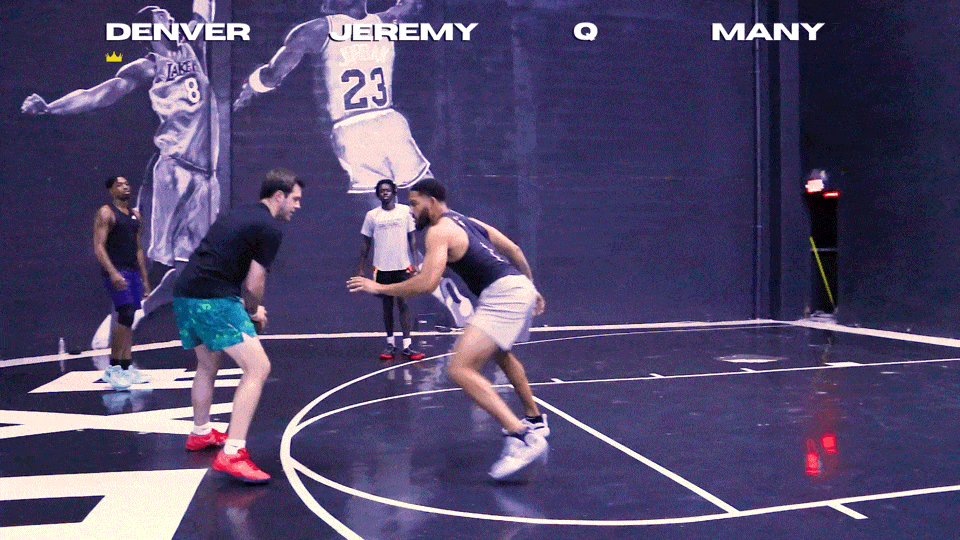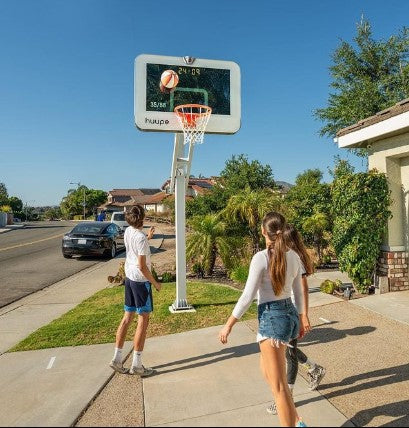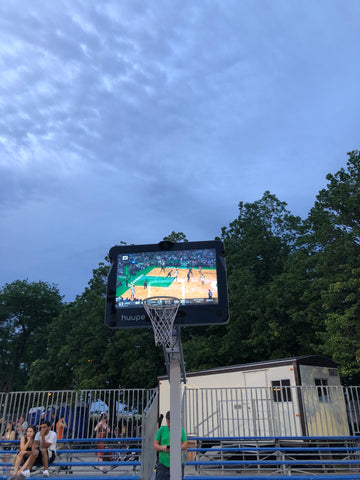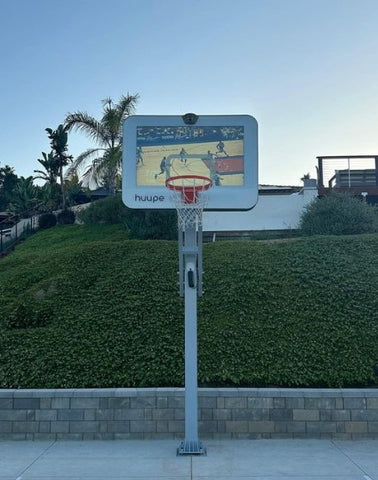
What Is a Carry in Basketball and How It Affects the Game?
What Is a Carry in Basketball and How It Affects the Game
A carry violation is also known as palming or a carry in basketball This is an infraction that occurs when a player illegally handles the ball during dribbling. The carry rule in basketball happens when a player allows the ball to come to the rest in one or both hands while dribbling. Another reason could be when the player momentarily places their hand underneath the basketball which disrupts the natural flow of the dribble. The result of this is a turnover, wherein the offending team loses possession of the ball, and the opposing team gains the opportunity to advance and score a basket. Throughout this post, you will have an understanding of what is carrying violation in basketball and what is considered a carry in basketball.
The carry rule is in place to maintain a fair level of play, uphold the integrity of the game, and prevent players from gaining an unfair advantage by controlling the ball excessively during their dribble. While carrying the ball in basketball may not be as regular as other basketball violations such as common fouls or traveling, it can still have a significant impact on the game’s final outcome. Understanding the implications of this type of violation may be tricky to those who are unfamiliar with the infraction. We must first delve into the details of the rule which includes the historical aspects of the game that is not limited to but includes, the players, team strategies, and the flow of the play to give the most valuable insights to the significance and necessity of this rule to allow the game that we all cherish to run as smoothly as possible.
The Origins of The Carry Rule
The carry rule has continued to have a long history that dates back to the early days of basketball. In its original form, the game did not have a dribbling rule. Players were only allowed to pass the basketball to move it toward the opponent’s basket. This lack of dribbling limited the creativity offensively which led to the game being less dynamic.

When It First Started
To begin this introduction of dribbling, I would like to introduce Bob Cousy. Bob Cousy is a Hall of Fame point guard for the Boston Celtics throughout the 1950s where he was able to revolutionize the sport of basketball. His exceptional ball-handling skills showed the potential of dribbling as a tool to use strategically. The other players proceeded to later exploit the dribbling techniques that allowed them to gain this rather unfair advantage over defenders. This proceeded to lead to the establishment of the carry rule.
The original purpose of the carry rule was to prevent players from having the opportunity to carry the ball for extended periods of time or using the carry that would allow them to maneuver around the defenders. As years went on, the interpretation and enforcement of the rule have changed which has led to subjectivity in the application by the referees. The carry violation usually occurs when a player does the following. The player could allow the ball to come to a rest in one or both of their hands while dribbling then proceed to resume the dribbling, engage in unrestrained palming or carrying that led to a dribble that is not considered natural, and place their hand underneath the basketball that would cradle or momentarily hold it while dribbling. It is important to be able to distinguish a carry violation from a normal dribble motion such as a crossover. The crossover is a dribbling move where a player quickly changes the ball from one hand to the other while being able to maintain the dribble. Referees have to identify and penalize what is the difference between a travel and a carry. Due to the action packed and fast-paced nature of the game and rapid movements, enforcing this rule can be extremely challenging. Another example of this would be to contemplate is a high dribble a carry. The referees have to think quickly so the game can continue with a proper cadence. With this occurring, the interpretation might vary from one officiating crew to another that has led to some controversies within the call.

The Lasting Impact
Carrying violations can have a significant and lasting impact on individual players. This impact can be either positive or negative which depends on the player’s skill level to adjust to the game. For this instance, skilled ball handlers rely heavily on their dribbling abilities to navigate the court, create scoring opportunities for themselves or their teammates, and break down defenses. These skilled ball handlers are usually point guards but can be any positioned player that has a great dribbling ability. When a carry violation is called against the player, it disrupts the offensive flow that involves momentum. This is something that could limit their effectiveness as playmakers. This could also be used as a defensive strategy or tactic. The opposing defenders can use this knowledge of a player’s tendency to as an advantage to win the game. They can attempt to force the player into committing these carrying violations by applying these on-ball pressure where they could be challenging them physically. This strategy can aim to disrupt or challenge the player's rhythm that would lead to a forced turnover.
It is important for these players that are called on this rule consistently to adjust their dribbling techniques to comply with the rules for a proper basketball strategy. For some of these players, this could be challenging and could lead to negatively affecting their overall performance for the short term.
Carrying can impact the team strategies that could influence the violations in negative ways. One of the most common ways that this could impact the game negatively is game stoppages. When a carry violation is called, the game has to come to a temporary halt. The players on both teams have to reset. The offensive team loses possession of the ball and gives it to the opposing team. These frequent stoppages can interfere with the game’s natural rhythm that can make it less enjoyable for the players as well as the fans watching the teams. This could also lead to some serious foul trouble where aggressive on-ball defense would often force carrying violations that would lead to increased foul calls. This would accumulate fouls and can put a team in foul trouble with more calls that could lead to free throw opportunities for the opposing team. This could also translate to a different type of momentum shift in a game. If the team’s ball handler is found to have committed a carrying violation at a point in a game where it is a crucial moment, this could energize the opposing team and their fans. An example of a crucial moment in a game could be a scoring run or key possession. The team that benefits from the turnover may gain confidence and control of the game.
The interpretation of the carry rule is a subjective task that is assigned to the basketball referees. The complexity of this rule is combined with the fast nature of the sport that could make it challenging to consistently make it more challenging to enforce. There are all types of different referees that may challenge each other on their views of this role. They might vary thresholds for what constitutes their own definition for a carrying violation. This would lead to occasional discrepancies in how the rule is applied. This would mitigate the inconsistencies that basketball organizations and leagues alike where they strive to provide clear guidelines for training the referees. With that being said, there have been significant technological advancements such as video review systems that may assist the officials in making the right call. A device like the video review system does allow the referee the opportunity to watch the play that just occurred and be able to discuss the call with the other referees as well to make the most accurate call for the most authentic version of the game.
The evolution of carrying in modern basketball today has continued to evolve. The interpretation and enforcement of the carry rule has also been updated as well where many people are familiar with knowing how do you avoid a carry in basketball. In some recent years, there have been discussions about potentially loosening the carry rule to allow more freedom of movement. The reason for this is for a desire to emphasize the promotion of offensive creativity as well as increasing the opportunity to showcase individual skills in games. This proposition comes with many challenges ahead. Something that we have seen that has been up for debate in many basketball circles is if a pocket dribble is a carry. It sometimes is called as one but there are many referees who would not call that or consider it to be a fault or violation when one is dribbling. One of these challenges can include an increase in carrying violations with the potential to disrupt the game’s balance. Conversely some argue that stricter enforcement of the carry rule would eliminate any potential gray areas that would ensure consistent application. Tighter enforcement would encourage players to refine their dribbling techniques that could lead to a higher quality of skill and athleticism.
Modernizing The Call
The carry violation in basketball has a long history and plays a crucial role in the shaping of today’s game dynamics. By knowing the answer to what is the carrying rule in basketball, you would be able to understand how to avoid this in a real game. This violation affects individual players, the flow of the game, and team strategies that continue to add elements of the challenge to the sport of basketball. For the players, avoiding the carrying violations requires mastering proper dribble techniques that will help adapt to the rules. The skilled ball handlers may strike a balance between compliance and creativity with the regulations. The teams on the other hand have to devise different offensive and defensive strategies that would account for carrying violations. The balanced approach that promotes teamwork and minimizing dribbling errors can account for a higher likelihood of success. This is something that is a consistent and accurate enforcement of the carry rule by the referees to maintain the game’s integrity and fairness. The continual education and training are essential to discrepancies in the rule’s application. In the near future, the governing bodies of basketball will continue to keep evaluating the carrying rule in this sport that allows for the best freedoms in offense that also is mindful of the regulations to the game. The carry violation remains an essential aspect of basketball that challenges players, coaches, and other officials to uphold the spirit of the game while embracing the continued evolution of the sport. By striking this delicate balance, the sport of basketball is one of the most thrilling and entertaining sports to watch today.

How The huupe Will Help
The huupe will be able to help in many ways to make sure that you will not get called for a carry violation. There are many dedicated high-quality trainers that will be able to help you with your dribbling abilities to make sure you know the proper techniques so you would not be called for this violation in a game. These elite trainers can give you the proper guidance and understanding so that you can make the most out of your practice opportunities to prepare for the real game. The best part about this is that you could train right at your driveway or local gym to get this amazing experience. It is also helpful to have the opportunity to watch live games where you can see your favorite players live on the screen so you can see how they handle the basketball which any user could learn how to emulate. Shop the huupe today! The huupe is available for pre-order on the website with an expected delivery in the fall of 2023.

Recommended Blog Posts















